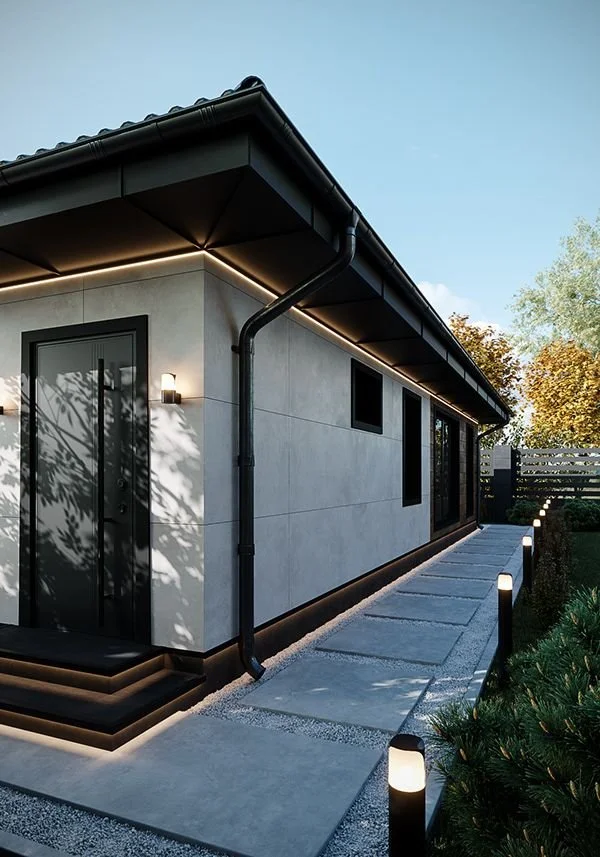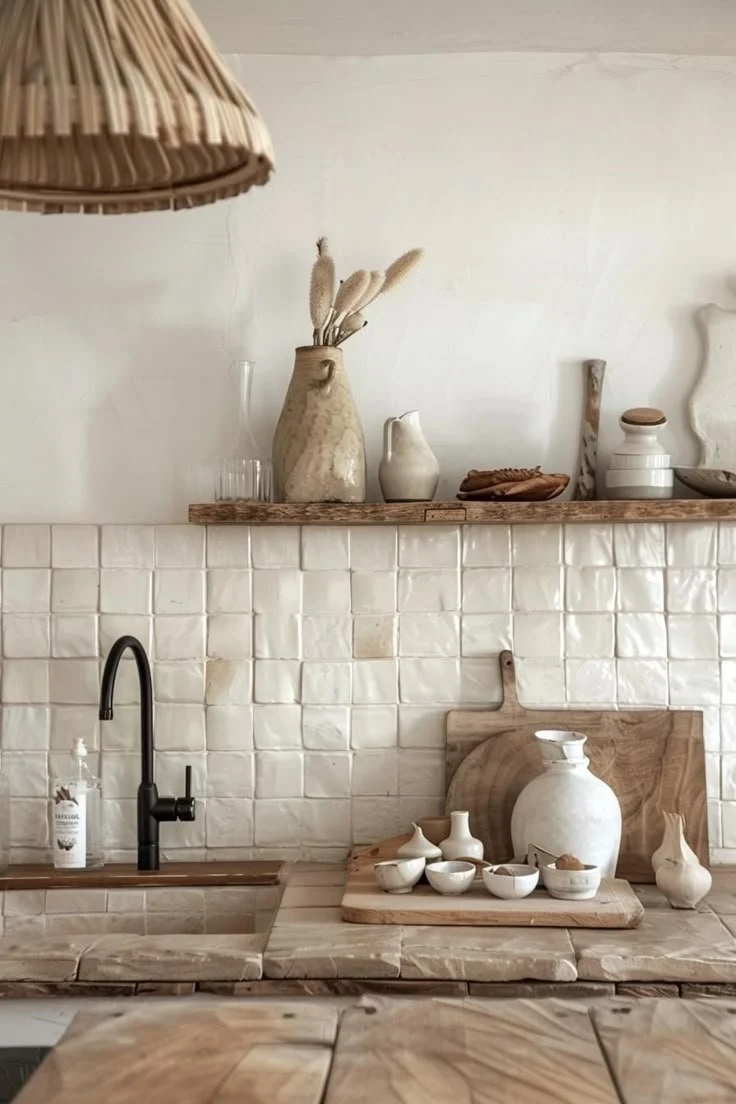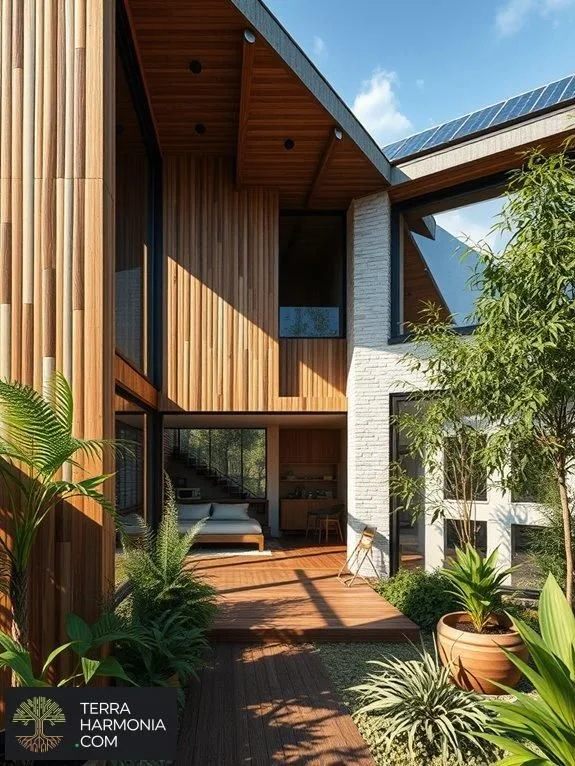The world of home aesthetics has expanded far beyond traditional decor elements, with innovative vertical solar panel installation options now seamlessly blending renewable energy with sophisticated design sensibilities. Urban dwellers previously excluded from sustainable upgrades due to limited roof access are discovering creative facade solar panel installation possibilities that transform vertical surfaces into both energy generators and striking architectural features.
These beautiful energy solutions are reimagining how clean power integrates with thoughtful living spaces, proving that sustainability and style can brilliantly coexist in even the most space-constrained urban environments.
In this article, we explore how vertical solar panels are dramatically transforming urban installations and reshaping the landscapes of our cities. By harnessing the sun's energy more efficiently, these innovative structures are becoming a pivotal component of sustainable urban development.
No. 1
The Vertical Solar Revolution: Beauty Meets Function
Gone are the days when solar energy required vast, unobstructed roof space and resulted in utilitarian-looking installations. The latest vertical solar applications have evolved into something that might be described as functional art – panels that serve an essential purpose while simultaneously enhancing a home's visual appeal.
Like the shift from bulky tube televisions to sleek wall-mounted screens, vertical solar has undergone a stunning design transformation. Today's options include subtle glass balcony railings that generate electricity while maintaining views, fence panels that create privacy while harvesting sunlight, and facade elements that add architectural interest while powering homes.
This evolution mirrors how pendant lighting evolved from purely practical fixtures to statement pieces that anchor a room's design. Vertical solar installations now serve as conversation-starting design elements that express a homeowner's values while performing an essential function.
No. 2
The Design Palette: Vertical Solar Options
The range of vertical solar applications has expanded dramatically, offering solutions for various urban living situations:
Window-Integrated Systems
The latest solar window technologies transform ordinary glass into power-generating surfaces without sacrificing transparency. These installations function much like transitional eyeglasses that adapt to changing light conditions – they appear nearly transparent from the inside looking out while absorbing energy from sunlight.
Perfect for apartments and condos with limited exterior modification options, these systems can be incorporated into existing window openings or specified for renovations. The visual effect resembles slightly tinted glass while silently generating electricity throughout the day.
Balcony Transformations
Urban balconies represent prime real estate for vertical solar installations.
Modern systems include:
Glass balustrades with integrated photovoltaic cells
Decorative privacy screens that double as solar collectors
Pergola structures with solar panel roofing
Planter boxes with integrated solar edges
These multifunctional elements transform previously underutilized vertical spaces into energy-generating zones without sacrificing the aesthetic appeal or functionality of outdoor living areas.
Facade Systems as Architectural Features
Perhaps the most visually striking application, vertical facade installations can transform an ordinary building exterior into a distinctive architectural statement. These systems range from subtle integrated panels that blend with existing materials to dramatic full-facade treatments that become the building's defining characteristic.
Like statement wallpaper that transforms an interior space, these installations change how a building presents itself to the world while harvesting clean energy. The visual impact can be subtle or bold, depending on the homeowner's preferences and the building's architectural context.
No. 3
The Styling Approach: Making Vertical Solar Shine
Integrating vertical solar into a cohesive design vision requires thoughtful consideration:
Complementary Color Palettes
The expanded color options for solar cells and framing materials now extend well beyond traditional blue-black.
Consider:
Terra cotta tones that complement Mediterranean-inspired exteriors
Sleek monochromatic panels for contemporary urban settings
Colorized cells that coordinate with exterior paint schemes
Customized frame finishes that match existing window treatments
This variety allows vertical solar to enhance rather than contradict established color schemes, much like selecting cabinet hardware that complements rather than competes with kitchen design.
Texture and Visual Interest
Vertical installations offer opportunities to introduce textural elements through:
Varied panel arrangements that create rhythm and pattern
Mixed materials that combine solar surfaces with complementary finishes
Light and shadow play as sun angles change throughout the day
Visual layering that adds depth to flat facades
These textural elements transform utilitarian energy production into a design feature that adds visual interest to exterior spaces.
Integration with Landscaping
Vertical solar particularly shines when thoughtfully combined with greenery:
Climbing plants that partially frame solar elements
Green walls that alternate with solar panels in a coordinated pattern
Container gardens positioned to complement rather than shade solar surfaces
Strategic placement that enables winter sun exposure while providing summer shade
This harmonious relationship between plants and panels demonstrates how technology and nature can enhance rather than oppose each other.
Houzz
Make your home project a reality. Find inspiration, products, and the pros to make it happen - all in one place.
No. 4
The Installation Experience: What to Expect
Understanding the practical aspects of vertical solar installation helps homeowners prepare for this significant design upgrade:
The Design Consultation
The process begins with a collaborative design approach focused on both aesthetics and performance:
Assessment of available vertical surfaces and their solar exposure
Discussion of design preferences and integration with existing elements
Customized renderings showing how the installation will look upon completion
Performance estimates based on orientation and local climate conditions
This consultative approach ensures the final installation enhances rather than detracts from the home's design integrity.
The Installation Choreography
The actual installation typically progresses more quickly than many other home renovations:
Structural assessment and reinforcement if needed
Mounting system installation following architectural lines
Panel placement with attention to visual alignment
Electrical connection and system testing
Final adjustments for optimal appearance and performance
Many homeowners are pleasantly surprised by how quickly vertical installations transform from concept to completion, often requiring just 2-3 days for the entire process.
The Finishing Touches
After installation, thoughtful details maximize both function and beauty:
Discreet cable management that preserves clean design lines
Strategically placed lighting that highlights the installation after dark
Smart home integration allows monitoring from design-friendly interfaces
Weatherproofing details that ensure long-term performance without compromising aesthetics
These finishing elements ensure vertical solar enhances the home's design story rather than creating a visual distraction.
No. 5
Styling Around Your Vertical Solar
Once installed, vertical solar becomes part of your home's design narrative, offering new opportunities for complementary elements:
Coordinating Exterior Finishes
Consider refreshing surrounding surfaces to harmonize with new solar elements:
Paint colors that complement panel framing
Exterior lighting that highlights solar features after dark
Window treatments that coordinate with panel aesthetics
Door hardware that echoes solar mounting details
These thoughtful touches create a cohesive exterior that feels intentionally designed rather than haphazardly assembled.
Interior Design Responses
The interior spaces adjacent to vertical solar installations benefit from thoughtful coordination:
Window treatments that work with rather than against solar windows
Furniture placement that capitalizes on changing light patterns
Color schemes that respond to the quality of filtered light
Decor elements that subtly reference sustainability themes
This inside-outside connection creates a harmonious transition between interior comfort and exterior technology.
No. 6
The Social Dimension: Conversations Around Vertical Solar
Beyond their functional and aesthetic benefits, vertical solar installations often become catalysts for meaningful social interactions:
The Neighborhood Conversation Starter
Distinctive vertical solar installations naturally attract attention and questions, creating opportunities to:
Share sustainable living insights with interested neighbors
Inspire others to consider creative energy solutions
Build a community around shared environmental values
Showcase how beauty and functionality can coexist
Many homeowners find these social connections become unexpected but welcome byproducts of their design decisions.
The Instagram-Worthy Upgrade
In an age of social media sharing, unique vertical solar features often become popular content that:
Generates positive engagement around sustainable design choices
Connects homeowners with like-minded design enthusiasts
Provides opportunities to showcase personal style philosophy
Positions homeowners as trendsetters in sustainable living
These digital conversations extend the impact of vertical solar beyond immediate physical surroundings.
Takeaways
The integration of vertical solar installations into urban homes represents a beautiful convergence of design sensibility and environmental responsibility. No longer limited to sprawling roof surfaces, solar energy has evolved to embrace the vertical dimension, turning previously unused spaces into both power generators and design statements.
For urban dwellers seeking to create homes that reflect their values while delighting the eye, vertical solar offers a compelling solution that transcends the traditional limitations of renewable energy aesthetics. These installations prove that sustainability need not require design compromise – instead, they demonstrate how thoughtful integration of technology can actually enhance a home's visual story.
As vertical solar continues evolving, the line between energy technology and architectural art will likely blur further, creating even more possibilities for homes that are as beautiful as they are responsible. The future of solar isn't just bright – it's vertically expansive and aesthetically inspiring.
Looking For Home Resources?
Looking to enhance your living space and create a sanctuary that supports your well-being? Explore our home partners who offer a wide range of resources to elevate your home environment.



























































































































































































